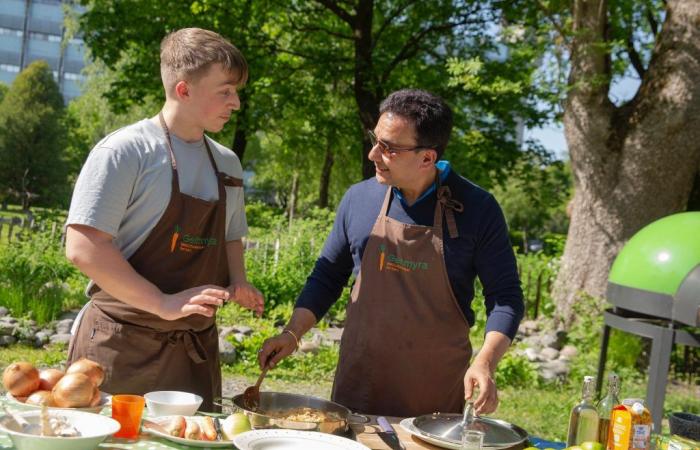Food unites us. We talk together through cooking and meals, says Monish Gujral as he stirs the large pot of fragrant butter chicken. William Wiland from Sagene gets everything from both words and cooking tricks.
Monish Gujral has just been to Stockholm and won the Gourmand prize for the cookbook Pickle Train. On the way back, he stops by Oslo – and Geitmyra.
And it is no coincidence that butter chicken is on the menu. Monish is the grandson of Kundan Lal – the chef who invented tandoori chicken and butter chicken.
The story starts in 1920
The story starts at a roadside inn in Peshawar in 1920. There Mokha Singh Lamba opened a small roadside inn and employed Lal. At that time, the tandoori ovens were only used to bake bread in. But why not roast chicken in the same oven, thought Lal.
He marinated the chicken in yoghurt, lime and spices and fried it on high heat. The tandoori chicken saw the light of day. The dish became very popular and put the roadhouse on the map. Then Gujral got a challenge. Because what was he going to do with all the chickens he didn’t get to use that day? They were so dry and boring. The solution was a rich, tomato-based, buttery and elegantly spicy sauce. Murgh makhani – or butter chicken – made the roadside stand famous across India.
In 1947, when Pakistan and India split, Lal – who had then inherited the roadhouse – had to flee. He and his family fled to Delhi and opened the flagship restaurant Moti Mahal – a restaurant with over 400 seats. Ministers, film stars, presidents – many have found their way to Moti Mahal and Gujral’s chicken dish. Monish started working for his grandfather in 1983 and today Moti Mahal is a restaurant empire with over 250 restaurants worldwide.
Inspirational
But now Monish stands at Geitmyra farm in Sagene and shares Indian cooking with the junior chefs. The young chefs are put to work stirring, cutting and tasting. From the rice, Monish creates a small work of art – for the eye and for the palate.
Inside the kitchen, William and Ali scrape the pots:
It is strong. But it’s so good-strong, says Ali.
And there is not a grain of rice left on the plates.
This was very inspiring, says William, who this autumn has applied for the chef’s line at Etterstad.


